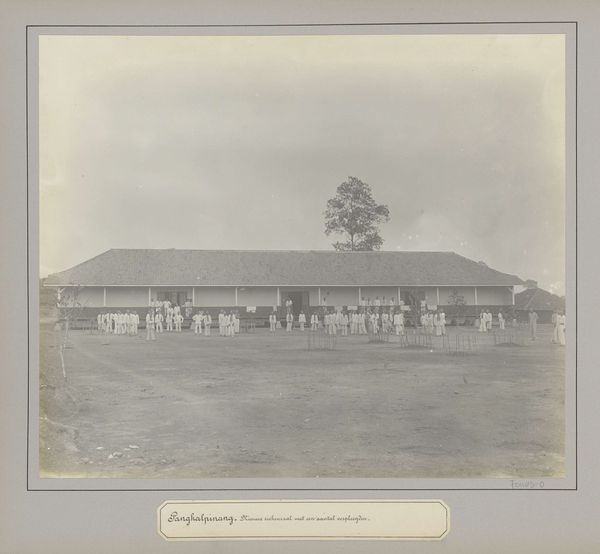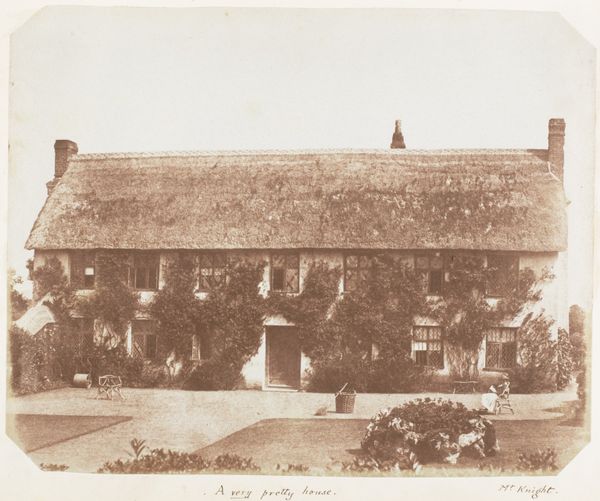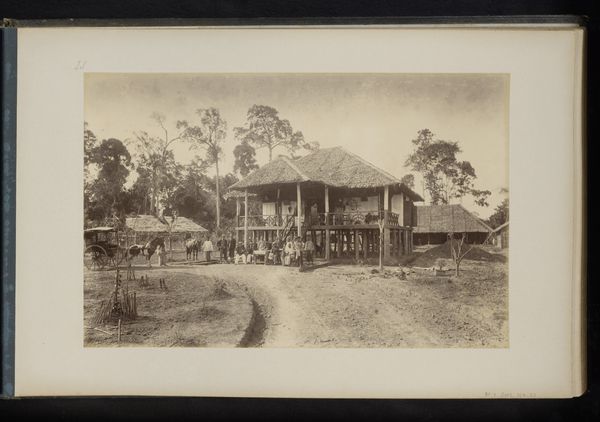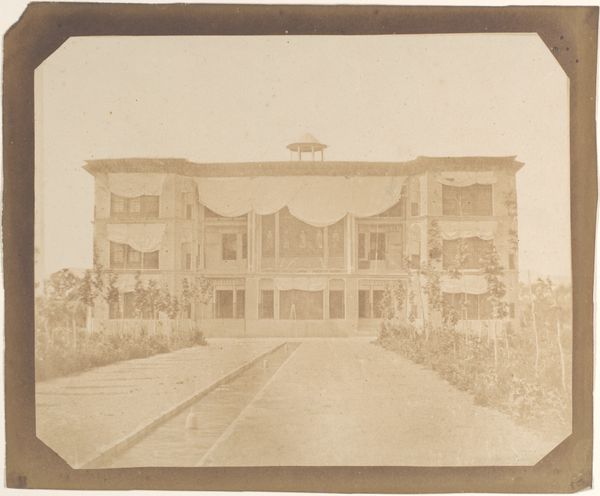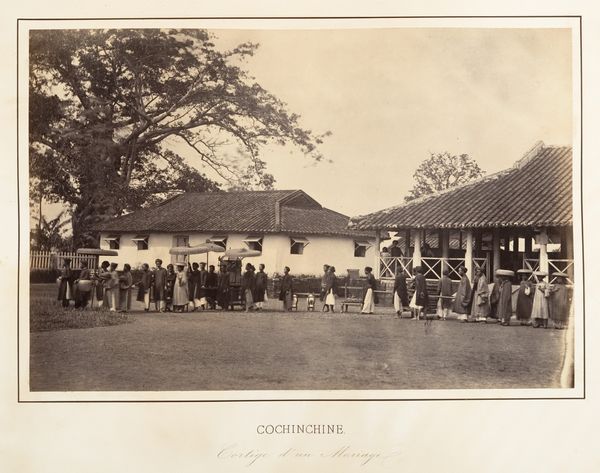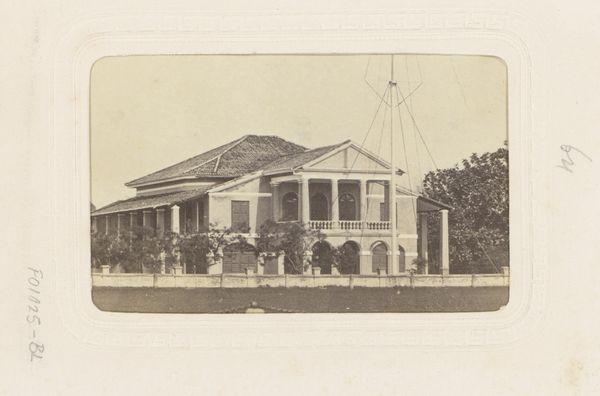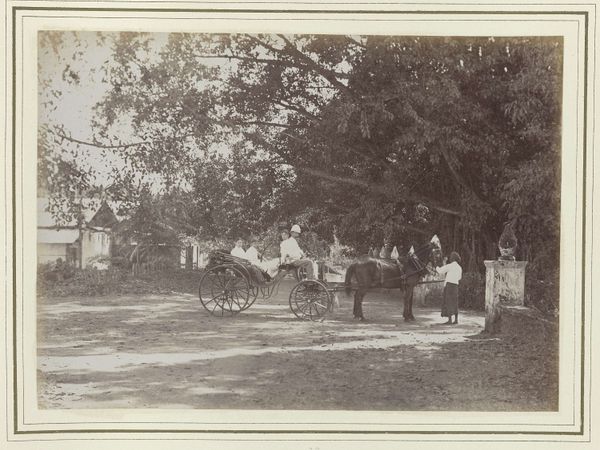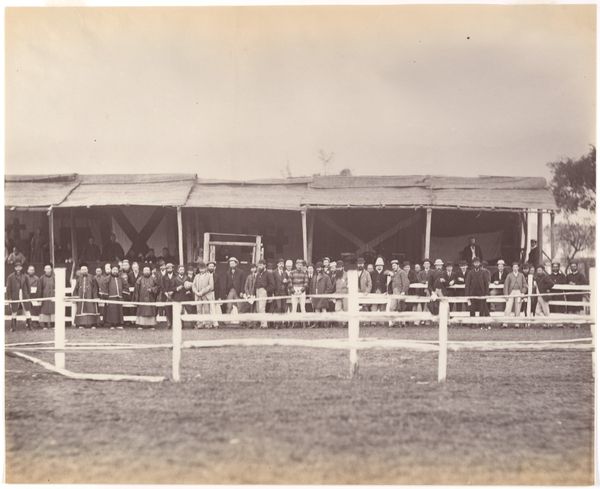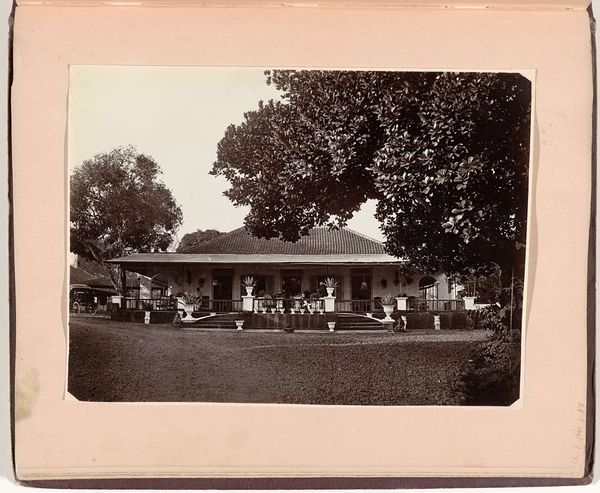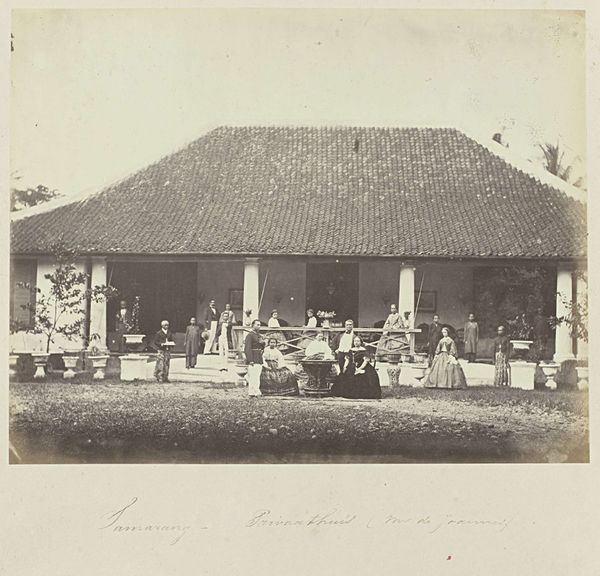
photography, albumen-print
#
portrait
#
asian-art
#
landscape
#
photography
#
19th century
#
men
#
albumen-print
Dimensions: 22.5 x 30.9 cm (8 7/8 x 12 3/16 in.)
Copyright: Public Domain
Curator: Emile Gsell's albumen print, "Enterrement, Cochinchine," dating back to 1866 and now residing at the Metropolitan Museum of Art, offers a compelling glimpse into 19th-century funeral rituals. Editor: Immediately, I’m struck by this serene procession; it feels otherworldly, draped in a sepia dreaminess. The meticulous detail captures such palpable solemnity despite the vast timeframe separating us. Curator: Indeed. The composition demonstrates a clear understanding of spatial relationships. Note the careful arrangement of figures and the meticulous detail in the ornamented structure, likely a mobile shrine. It provides a strong focal point, drawing the viewer's eye through the linear progression of the cortège. Editor: The fence in the background…it strikes me as such an odd counterpoint, this very ordered and Western barrier sitting behind the elaborate ornamentation. Almost as if observing. What sort of symbolism might be layered into this contrast? Curator: The photograph's tonality and textures create a captivating visual rhythm, further articulated by the clothing of the pallbearers and the structure of the funerary biers themselves. We can understand the function of the framing—in combination with a lack of strong contrast—to draw our focus into an intimate middle ground. Editor: And there’s a story within the repetition, Curator; figures emerging in a calculated haze from the very soft blur. Almost like spirits caught midway between worlds in a tangible, melancholic way. It is haunting, really. It causes reflection on rituals around mortality that are somehow also utterly universal. Curator: Precisely, it serves to highlight the convergence of ritual, societal norms, and material culture, particularly during times of loss. It is within that liminal space between representation and documentation that we discover so much to examine. Editor: What begins as document turns deeply affecting...It is quite moving to realize such a permanent rendering of grief from so long ago still echoes and connects today.
Comments
No comments
Be the first to comment and join the conversation on the ultimate creative platform.
